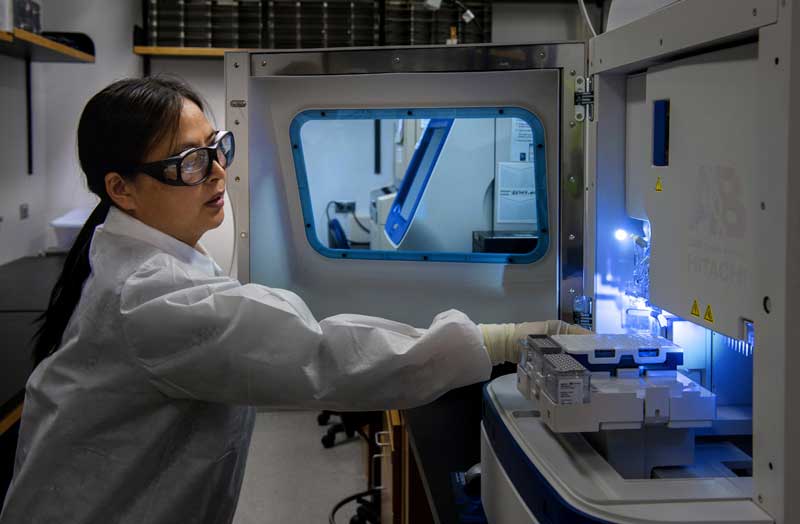
The medical laboratory employee shortage has become a growing problem in recent years, with many clinical laboratories struggling to find qualified candidates to fill open positions. This shortage can have a significant impact on clinical laboratories, affecting their ability to provide timely and accurate test results, as well as their financial performance.
In this blog post, we will explore the impact of the medical laboratory employee shortage on clinical laboratories and the potential consequences of not addressing this problem.
Why is there a medical laboratory employee shortage?
The medical laboratory employee shortage has been caused by a number of factors, including:
- Aging workforce: Many experienced laboratory professionals are retiring, which has created a gap in skilled workers.
- Lack of interest: Fewer students are pursuing careers in medical laboratory science, which has resulted in a smaller pool of potential candidates.
- Competition: Clinical laboratories are competing with other industries, such as pharmaceuticals and biotech, for qualified workers.
- Education and training: There are challenges associated with training and educating laboratory professionals to meet the evolving demands of the healthcare industry.
The impact of the medical lab employee shortage on clinical laboratories
The medical laboratory employee shortage can have a range of consequences for clinical laboratories. Here are some of the key impacts:
- Delayed test results: When clinical laboratories are understaffed, it can take longer to process and analyze test results. This delay can impact patient care and satisfaction, and it can also increase the risk of medical errors.
- Decreased testing volume: Clinical laboratories may not be able to process as many samples as they could with a full staff, which can result in decreased testing volume and lost revenue.
- Increased labor costs: With fewer qualified candidates available to fill open positions, clinical laboratories may need to pay higher salaries or offer other incentives to attract and retain skilled employees. This can result in increased labor costs for the laboratory.
- Reduced efficiency: When medical laboratories are understaffed, employees may need to work longer hours or take on additional responsibilities, which can lead to burnout and decreased efficiency. This can lead to longer turnaround times for test results and increased costs associated with retesting or resampling.
- Delayed growth and expansion: Without enough skilled employees, clinical laboratories may not have the capacity to take on new clients or expand their services. This can limit revenue growth and potential profitability.
How can clinical laboratories address the medical laboratory employee shortage?
There are several strategies that clinical laboratories can use to address the medical laboratory employee shortage, including:
- Increasing recruitment efforts: Clinical laboratories can work to increase awareness of the laboratory profession and actively recruit candidates from educational programs.
- Offering training and education: Clinical laboratories can provide on-the-job training and education to help new hires gain the necessary skills and experience.
- Providing competitive salaries and benefits: Clinical laboratories can offer competitive salaries and benefits packages to attract and retain skilled employees.
- Implementing automation and technology: Clinical laboratories can use automation and technology to streamline processes and increase efficiency, reducing the need for additional staff.
- Partnering with educational programs: Clinical laboratories can partner with educational programs to provide internships and other opportunities for students to gain hands-on experience.
Conclusion
The medical laboratory employee shortage has become a growing problem in recent years, and it can have a significant impact on clinical laboratories. Delayed test results, decreased testing volume, increased labor costs, reduced efficiency, and delayed growth and expansion are some of the key impacts that clinical laboratories may face as a result of the shortage. Addressing the shortage through recruitment efforts, training and education, competitive salaries and benefits, automation and technology, and partnerships with educational programs can help clinical laboratories overcome these challenges and ensure they have the skilled workforce they need to provide high-quality healthcare services.
Recent Posts
- Ensuring Data Security in Clinical Labs: Best Practices for Lab Software Solutions
- The Power of Data Analytics with LIMS in Clinical Labs
- Lab Software and LIMS: Pioneering Digital Transformation in Clinical Labs
- Lab Software Solutions and Technology: The Silent Revolution in Medical Diagnostics
- Revolutionizing Laboratories: How Digitalization and Connectivity Can Transform Lab Efficiency and Quality of Patient Care
